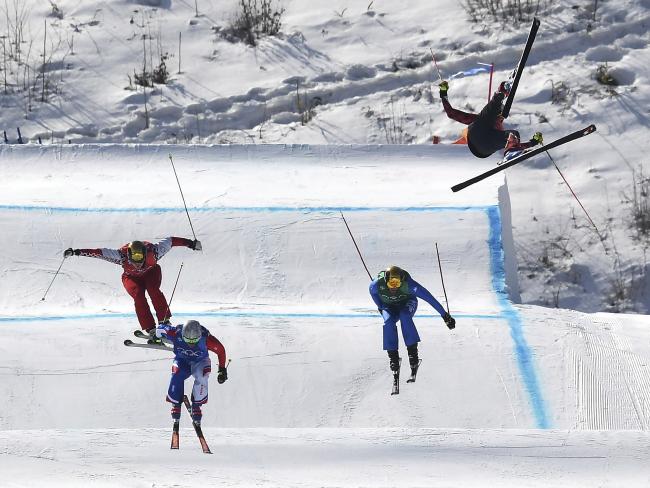 Dramatic crashes, spectacular spills and high-profile injuries – if anything, a week and a half of action in Pyeongchang has proved Winter Olympic events carry with them a fairly high degree of risk.
Dramatic crashes, spectacular spills and high-profile injuries – if anything, a week and a half of action in Pyeongchang has proved Winter Olympic events carry with them a fairly high degree of risk.
Just yesterday, one of the Canadian skiers Chris Del Bosco suffered a suspected broken pelvis after a brutal 30m fall in the men’s ski cross.
The 35-year-old completely misjudged his takeoff from a jump and accidentally performed a horror backflip, which left him flying through the air upside-down.
He desperately kicked his legs in midair to try to reset himself but could not get upright.
Del Bosco then landed on his right hip before skidding several metres and coming to a stop as his rivals went on to finish the run.
A Canadian official initially said he had suffered a broken pelvis but then revealed more Medical Imaging tests were needed to determine the full extent of the injury.
Elsewhere in the heats, Terence Tchiknavorian of France was taken to hospital with a suspected fractured shin and Austrian Christoph Wahrstoetter picked up a concussion as the casualties piled up in the ski cross and athletes were taken away on stretchers.
Australian snowboarder Jessica Rich competed at the Games just a month after tearing her ACL, and revealed she had previously broken her back, and twice broken her collarbone.
Her team-mate, Cam Bolton competed in the snowboard cross with a suspected broken wrist, while Jarryd Hughes, who won silver, has had five knee operations over the course of his career.
Below are statistics which have been gathered from both the 2010 and 2014 Winter Olympic Games which show a combined injury rate per 100 athletes.
It is certainly clear that broken bones and terrifying tendon tears are nothing but normal when it comes to our tough Winter Olympians. I am positive that the Medical Imaging team in Pyeongchang are as busy as can be!
To find out more about the different kinds of diagnostic imaging which may be useful for injury diagnosis CLICK HERE
